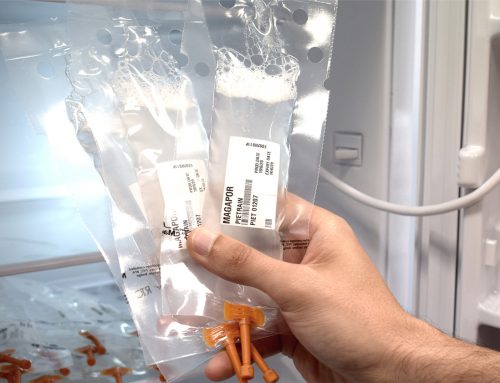Continuing with the topic of seminal collection and its manipulation, now our department of Veterinary Biotechnology will cover more deeply the bacterial contamination, great menace and problem that every boar stud must face. We will post two blog entries, given the extent of the issues. Here comes the first part
In boars, the semen is collected and processed for subsequent use in artificial insemination, and due to this collection and seminal manipulation, bacterial contamination in swine semen is very common. This contamination can come from different sources. Although the primary one is the male, the ejaculate is usually contaminated at the very moment of collection because of the proximity of preputial fluids, hair, skin, … The operator who performs the collection and the equipment used play an important role in this process. In addition, the manipulation of the ejaculate, the use of non-sterilized material and its extension can expose the sample to bacterial contamination (De Grau et al., 2006).
Therefore, a key point is the compliance, by all staff, of strict hygiene measures during the collection and the later handling of the ejaculate. If preventive measures do not properly control these risks, there may be decreases in semen quality, dose longevity and fertility.
Thus, general cleaning protocols should be followed in the areas of laboratory, pens and extraction areas, since compliance with hygienic measures contributes significantly to a general reduction in the type and amount of bacterial contamination in the stud.
The female reproductive tract has developed its own defence mechanisms to deal with the possible bacteria present in semen (Dalin et al., 2004, Morrell and Wallgren 2011). However, when that semen is used in AI, the bacteria may grow and multiply in the seminal dose if the antibiotics present in the extender do not control this growth correctly. Insemination with contaminated doses could contribute to an increase in vulvar discharge or an increase in regular return to estrus, or even in the most extreme cases, embryonic or fetal death, systemic endometritis or infections in inseminated young sows (Dalin et al., 2004; Maes et al., 2008, Morrell and Wallgren 2011, Goldberg et al., 2013). On the other hand, high levels of bacterial contamination have unfavourable effects on sperm cells (Kuster and Althouse 2016).
To avoid these problems, it is very important to train and raise awareness among the staff on the problems that can cause an increase in contamination, as well as having a clear and precise procedure for applying strict hygiene measures during the entire process from extraction to transportation to farm of seminal doses.
Once on the farm, it is also very important to have set procedures for collection and storage, as well as adequate equipment to maintain the seminal doses received in optimal conditions until the moment of insemination.
After our holidays we will continue in a new blog post. If you have any questions, please, do not hesitate to contact our Biotechnology and Veterinary R + D + i department in Magapor.




